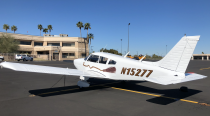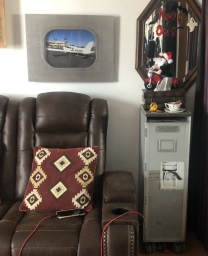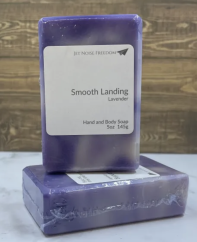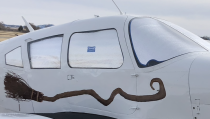
Prepare for your Remote Pilot Certificate with sUAS rating (Part 107) written knowledge test.
Last updated on November 11, 2023
Start by clicking on the links below and downloading the FAA material
Remote Pilot Small UAS - Study Guide - August 2016 - FAA-G-8082-22
Remote Pilot Small UAS - Airman Certification Standards - April 2021 - FAA-S-ACS-10B
Unmanned Aircraft General - UAG - Sample Questions - August 2021
Airman Knowledge Testing Supplement for Sport Pilot, Recreational Pilot, Remote Pilot, and Private Pilot - June 2018 - FAA-CT-8080-2H - contains the supplemental graphics necessary to assist in answering any question on a Remote Pilot Certification (UAG) knowledge test.
14 CFR Part 1 - Definitions
14 CFR Part 47 - Aircraft Registration
14 CFR Part 48 - Registration and Marking
14 CFR Part 61 - Certification of Airmen
14 CFR Part 71 - Air Traffic and Airspace
14 CFR Part 89 - Remote ID
AC 89-1 - Means of Compliance Process for Remote Identification of Unmanned Aircraft
AC 89-2 - Declaration of Compliance Process for Remote Identification of Unmanned Aircraft
AC 89-3 - FAA-Recognized Identification Areas
14 CFR Part 91 - General Operating and Flight Rules
14 CFR Part 107 - Small UAS
Aeronautical Information Manual (AIM)
Flight Standards Information Management System (FSIMS) - 8900.1 - October 2022
For the most current Aircrew Knowledge Testing General Requirements, refer to the
FAA Order 8080.6H - Conduct of Airman Knowledge Tests
Aeronautical Chart User's Guide - very handy if you encounter an unfamiliar symbol on the chart
Pilot's Handbook of Aeronautical Knowledge
Courtesy of Greg Reverdiau and AZDrone here is a 3-D model to help you learn airspace
Safety Alert for Operators (SAFO) 10015
Aviation Weather Handbook - FAA-H-8083-28
Historical Documents (for potential reference)
Feb 2012 - FAA Modernization and Reform Act (FMRA) - PL 112-95
PL 112-95, Title III, Subtitle B. In 2012, Congress passed the FAA Modernization and Reform Act of 2012, PL 112-95. Section 333 of PL 112-95 directed the Secretary of Transportation to determine whether UAS operations posing the least amount of public risk and no threat to national security could safely be operated in the NAS and, if so, to establish requirements for the safe operation of these systems in the NAS. As part of its ongoing efforts to integrate UAS operations in the NAS and in accordance with Section 333, in June 2016, the FAA issued a final rule adding part 107, integrating civil sUAS into the NAS. Part 107 allows sUAS operations for many different purposes without requiring airworthiness certification, exemption, or a Certificate of Waiver or Authorization (COA).
June 2016 - FAA finalized 14 CFR 107 (624-page document) governing commercial UAS operations in the US. The FAA addresses aviation safety in 3 key areas: personnel, equipment, and operations. The FAA assesses each of these areas both independently to meet current regulations and standards, as well as collectively to ensure no conflicts exist overall that would create an unsafe condition. This approach allows the FAA to be flexible in responding to the needs of the aviation community while still being able to establish standards for future growth and development. Part 107 contains subparts that focus on each of these key aviation safety areas specific to sUAS, and the chapters in the AC are organized in the same manner.
July 2016 - FAA Extension, Safety, and Security Act (FESSA) - PL 114-190
Aug 2016 - 14 CFR 107 went into effect
Aug 2016 - FAA-G-8082-22 - FAA Remote Pilot Study Guide went into effect
Oct 2018 - FAA Reauthorization Act - PL 115-254
April 2023 - FAA ORDER JO 7200.23D - went into effect
Voluntary Best Practices for UAS Privacy, Transparency, and Accountability
simmons - (2010) legal interpretation.pd[...]
Adobe Acrobat document [47.2 KB]
RIN_2120-AJ60_Clean_Signed with Nilsson [...]
Adobe Acrobat document [2.2 MB]
Applicants who do not meet the requirements in 14 CFR 107.61(d)(2) must pass the knowledge test before applying for a Remote Pilot Certificate with an sUAS rating.
Free FAA training on the FAA Safety Team website:
- Current Part 61 certificate holders are eligible to take ALC-451
- Part 107 remote pilots who are also certificated and current under Part 61 are eligible to take ALC-515
- Part 107 remote pilot certification holders (regardless of currency) are eligible to take ALC-677
Integrated Aircrew Certificate and Rating Application (IACRA)
Practice tests are available at PSI Services, LLC
Speaking from the standpoint of a seasoned pilot I would like to recommend at this point a free AOPA membership (good for 6 months) so that you can reap the benefits of the Air Safety Institute Interactive modules at several points in this course:
Adobe Acrobat document [201.3 KB]
Adobe Acrobat document [346.5 KB]
Microsoft Word document [29.2 MB]
Contact Me
Sarah Nilsson, J.D., Ph.D., MAS
602 561 8665
You can also fill out my
Get Social with Me
Legal Disclaimer
The information on this website is for EDUCATIONAL purposes only and DOES NOT constitute legal advice.
While the author of this website is an attorney, she is not YOUR attorney, nor are you her client, until you enter into a written agreement with Nilsson Law, PLLC to provide legal services.
In no event shall Sarah Nilsson be liable for any special, indirect, or consequential damages relating to this material, for any use of this website, or for any other hyperlinked website.
Steward of
I endorse the following products
KENNON (sun shields)








